
The Book
Temporal Anomalies in Time Travel Movies
presents
Temporal Anomalies Index 2010
As explained in the previous Temporal Anomalies Classics, the useful and oft-linked index to the years of Examiner articles became unavailable. This was the first of a series of indexing articles, each covering articles in series begun during a particular calendar year. We already covered 2009; this one covers 2010 including the Terminator series and the addition of Terminator Salvation, The Last Mimzy, The Lake House, The Time Traveler's Wife, Hot Tub Time Machine, and Premonition--plus the first of our miscellaneous articles related to time travel movies in oblique ways.
As explained, this series of indices was started when it became temporarily impossible to maintain this web site and seemed advisable to provide links to early Examiner articles for ease of access. That in turn became problematic, and we have since determined instead to move all that material here to M. J. Young Net, and hopefully to support it by reader contributions through Patreon and other means.
Miscellany
To the list of the first two miscellaneous articles published we should add the previous indexing articles:
-
Temporal Anomalies Classics: as mentioned, introduced a plan to preserve these articles, since abandoned.
-
Temporal Anomalies Index 2009: is the predecessor to this article, covering Primer, Star Trek (2009), Bender's Big Score, The Butterfly Effect, popular Christmas movies, and the Temporal Theory 101 series.
-
Back to the Future nationwide theatrical showing this evening: announces the October 25th, 2010 showing of the famed film.
-
People Magazine's Woman of the Year Sandra Bullock featured in time travel films: is pretty much self-explanatory, as the actress who appears in both Premonition and The Lake House is recognized by the celebrity news magazine for her outstanding if somewhat mixed year.
Terminator One, Two, and Three
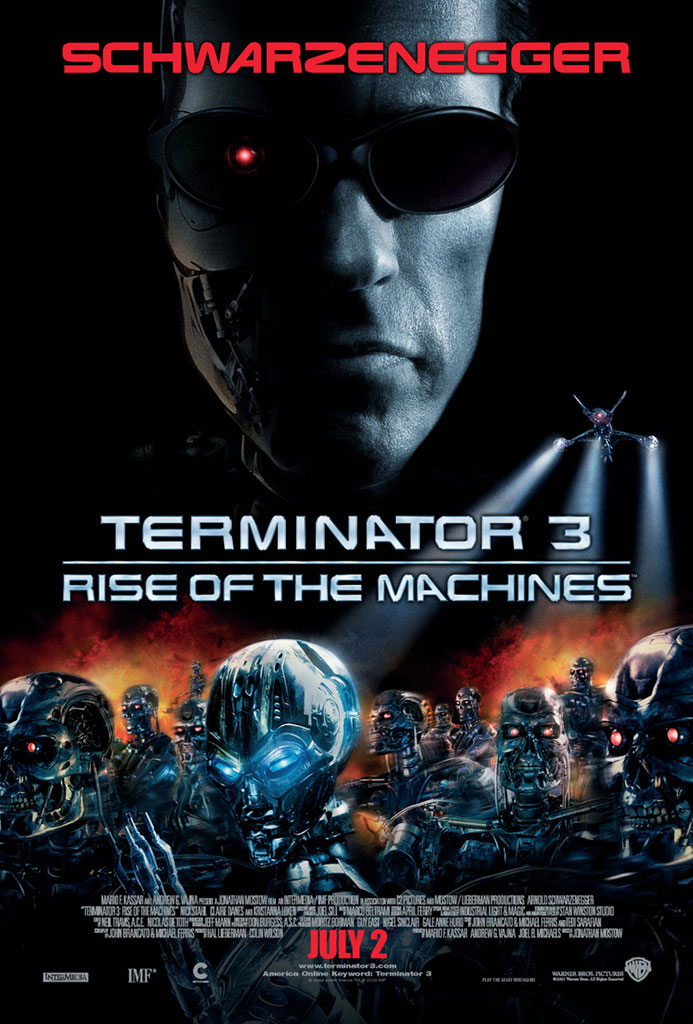
The analysis of
Terminator Salvation was originally presented as a seventeen-part series, but was consolidated to two articles, the first of which was a recap of the events of the first three films and the second an examination of the issues raised by the fourth--a film with no time travel which nevertheless raised serious temporal issues along the way.
Commenters suggested that the entire Terminator series should be presented afresh to incorporate the new data. Thus all of Terminator, the first two films having the honor of being the subject of the first page published on the original Temporal Anomalies site and the third also analyzed a while back, is re-examined:
-
A Starting Point: taking the information about The Autonomous Weapons Division of the Cyber Research Systems branch of the United States Airforce from the third film, the original history is reconstructed sufficiently to give us an original SkyNet launch in 2004.
-
Sarah Conner's Child: the timelines created within the first movie are briefly recounted as Kyle Reese becomes the father of John Conner.
-
History Repeats Itself Yet Again: the complications created by the second film are considered, leading to the point where Sarah ought to create an infinity loop by destroying Cyberdyne Systems.
-
Sidestepping Infinity: explains how John Conner can save the universe by lying to his mother.
-
Square One Squared: the transition from the second to the third film is considered, addressing such details as the development of the futuristic weapons in a 2004 setting.
-
John and Kate: considers how the couple connect in that history of the world in which no terminator is trying to kill her.
-
The Kate Escape: how John and Kate could escape from a terminator without the aid of another terminator is considered, with an unexpected explanation.
-
A Few Dead Men: solutions are found for the anomaly created when the T-X appears to kill people on its hit list, which in bumping them off also bumps them off the list.
Terminator Salvation
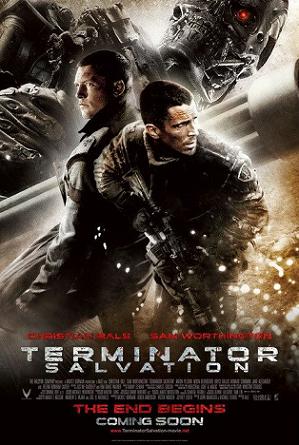
The analysis of Terminator continued with additional articles and a question answered about the fourth film in the franchise:
-
Salvation Cometh: a foundation is laid for the consideration of the fourth film, Terminator Salvation.
-
Resequencing: the sequential order of events is discussed, taking into account that SkyNet has not yet attempted to kill John Conner in the past when it tries to kill Kyle Reese in the future.
-
Wrong or Wright?: the peculiar conversation between SkyNet and Marcus Wright, in which the computer suggests that it has attempted to kill John Conner before, is examined.
-
Paternity Test?: why SkyNet believes that Kyle Reese is John Conner's father is another problem the film presents, and there are several possible answers that work within the film.
-
Killing Niven's Grandfather: it is admittedly possible that SkyNet does not know whether Niven's Law means that John Conner would still survive even if his father were killed in the future.
-
Fixed or Replaced?: the question of whether this movie might be explainable under fixed time theory is addressed.
-
Bad Dates: when Kyle Reese is born becomes a problem, because it appears to fall between the two SkyNet launch dates, which means he has to be born at roughly the same time despite the upheaval of the war.
-
Half a Man: the birth of Kyle Reese is made more probable by recognizing that there is some wiggle room as to whether this is the right Kyle Reese.
-
Inconclusion, Temporarily Terminated: the series is wrapped up and reviewed, with a few comments about the possible future of the series.
Again we have questions:
- Terminator Question 1: When Does Kate Matter?: the issue is raised as to whether John and Kate would have had to stay together following their basement tryst in 1997 if the T-1000 had not arrived, and the answer is complicated.
The original pages were expected to be restored as Examiner articles in the days ahead [but are now here, relying on your generous support through Patreon and otherwise], and there is a new film, Terminator Genesis, released in 2015, so there will certainly be more Terminator material in the future.
The Last Mimzy
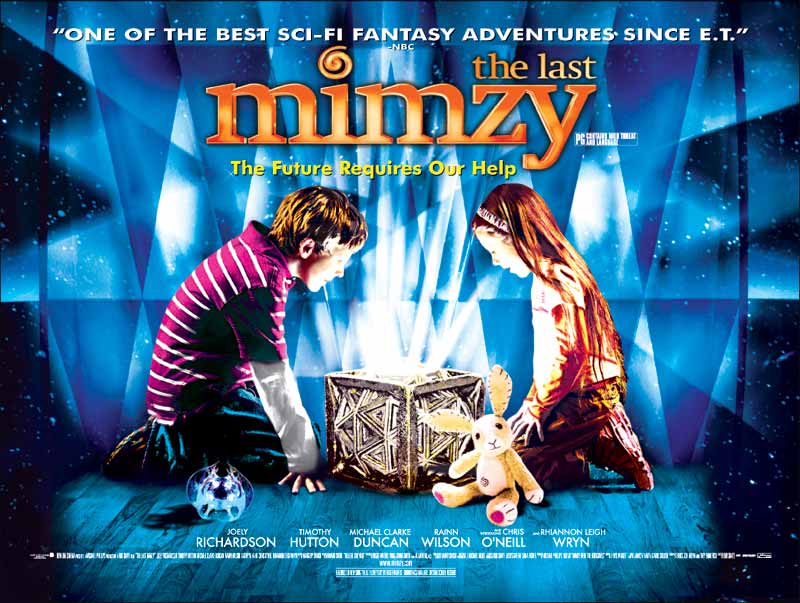
John "A-1 Nut" Cross called my attention to this family film which is also a time travel story, in which some scientist in the future is sending toy rabbits to the past in an attempt to gather some pure human DNA with which to restore humanity to the human race of the future. The thinly-veiled environmentalist polemic makes for an entertaining story, but has serious problems as a time travel movie. Our analysis of The Last Mimzy uncovers most of them:
-
Time Travel for Kids: introduces the film's premise and some of the challenges facing any analysis.
-
The Lost Mimzys: considers the problem created by the statement that "many" were sent to the past, but we can account for at most three.
-
The Order of Mimzys: examines the question of in what sense or senses the one in the film is the "last", and what that means to history.
-
The Mandala Mimzy: resolves the issues raised by the implication that a Mimzy in twelfth century Tibet impacted the development of Buddhism.
-
The Alice Mimzy: considers the problems which arise if Charles Dodgson does not become the famous Lewis Carroll by publishing stories inspired by a white rabbit trying to get through a looking glass back into a rabbit hole on time.
-
What's in a Name?: faces the particular problem of the use of the word "mimzy" in the Jabberwocky poem, and the loop that creates if Lewis Carroll got it from the doll and the doll got it from Lewis Carroll.
-
Intelligence: recognizes that Intel gets a boost to its technology which, as with Terminator, escalates in a sawtooth snap as each advance in Intel's technology improves the Mimzy which in turn advances Intel's technology.
-
Numbers: addresses the lottery problem, and the impact that the redistribution of wealth will have if Larry White and Naomi are multimillionaires in the altered timeline.
-
Bridge Building: tackles advances to civil engineering, and the potential change in future science that will endanger the existence of the scientist sending back the Mimzys.
-
Parlor Tricks: recognizes that entymology will also advance, and the basic research here will have unpredictable consequences.
-
Precocious Prodigies: concludes the series with a consideration of the impact two psionically capable children will have on the history of the world, ultimately very likely undoing all of future history.
A question was raised along the way:
-
Probability of Analysis: It was more a statement than a question in response to The Last Mimzy part 5: the Alice Mimzy, but it challenged the likelihood of some aspect of the analysis being correct. This discussion addresses how such analyses work, and in what senses they are likely.
The Lake House
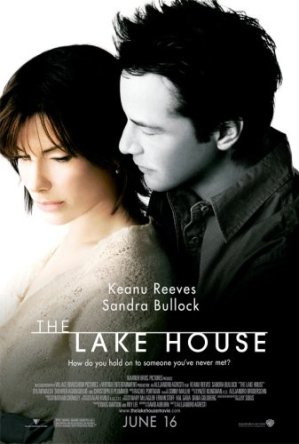
Sandra Bullock and Keanu Reeves have been romantically involved on screen before, and this time they attempt to make the sparks fly by correspondence. Like that other Kate who fell in love with Leopold, this Kate is in the future and her Alex in the past, but in this case both of them lived at The Lake House at different times.
Here are the sections in the series:
-
A Romantic Fantasy: introduces the basic premise and the time travel element.
-
How It Begins: identifies the critical event which launches the magic that gives us the time travel.
-
The Bitch is Magic: examines the complication created by the presence or absence of the dog Jackie in the magic and the time travel.
-
Reconstruction: attempts to formulate the original history that existed before there was any time travel.
-
An Accidental Meeting: wrestles with the problem of why Alex was killed at Daley Plaza if he was not there looking for Kate, who in the original history he could not have known.
-
They Got a Dog: the initial changes made to history by the arrival of Jack the Dog are considered.
-
The Flag Trick: the magic that causes the mailbox flag to rise and fall is examined.
-
Before You Ask: the question is why Alex' letters don't leap to the future the same way Kate's leap to the past, and the answer has to do with the form of the future.
-
Ratcheting: covers the little things that happen along the way, as time keeps being revised.
-
Instant Graffiti: looks at the walking tour, but most particularly the problem of the grafitti suddenly appearing at the end.
-
A Tree Grows: considers a similar but more complicated problem with the appearance of the tree in front of Kate's apartment.
-
Happy Birthdays: looks at the revisions of time in the changing interactions at the party Morgan throws for Kate.
-
No Call No Show: brings up the problem of Alex' failure to call at the time Kate suggested and to appear at the restaurant at which he'd made reservations.
-
Real Estate: considers the complications involved in people moving to the correct addresses at the right times.
-
Persuaded By a Book: finally deals with the delivery of Kate's copy of Persuasion by hiding it in her apartment somewhere where it wouldn't be found for a couple years.
-
The Other Book: examines what happens when Kate sends Alex a book that has not yet been published when he receives it.
-
Visionary Coincidence: brings Kate to the architect brother of the architect she knew, which at least raises eyebrows.
-
This Changes Everything: finally reaches the conclusion of the movie, which rewrites all of history to one final form completely incompatible with every previous form.
Our copy was another gift from Jim Denaxas. Again there were questions from readers [originally addressed in a single article but in our republication here split into two]:
-
Assorted Questions from Fred & Doc: apparently the answer given in The Lake House part 8: Before You Ask did not adequately answer all the questions, because two readers challenged some of the statements made. This article was promised as an answer to those questions [the first suggesting a fixed time solution, the second confused about the involvement of the dog].
The Time Traveler's Wife

It is easy to see why this film has such appeal. As a time travel story, it is highly challenging, with many interesting ideas and insights and more expressed and implied trips through time than any other film in recent memory. Meanwhile, it remains a love story, a story of two people overcoming the problems posed by what is treated as a medical condition, that one of them periodically and unexpectedly vanishes from time and space, spends time elsewhen, and as unpredictably returns.
Its perturbations made The Time Traveler's Wife one of the most challenging to analyze in a long time, as the sheer number of relevant articles [originally published individually] attests.
-
A Fixed Time Gem: opens the series with the recognition that the film could work under fixed time, if we are comfortable with a few informational predestination paradoxes.
-
A Fixed Time Heartbreak: suggests that the film is less romantic as a fixed time story, in part because the central romantic notion is probably not true.
-
The First Time is the First Time: pulls together as much of the timeline as possible from such clues as the film gives.
-
The First Time is the Worst Time: considers what the first trip would have been like before there were any other trips to alter it.
-
The Artist and the Librarian: considers this as their first meeting in the original history.
-
A Future Problem: explains what happens when Henry makes trips to the future.
-
Just Say "No": explores the nature of freedom when history literally repeats itself.
-
Altared: reconstructs the original history of the wedding, and how that might have been resolved.
-
The Second First Meeting: looks at the early meadow meetings and how each changes the others.
-
Make Your Own Luck: considers the use of time travel to win the lottery.
-
Millions: looks at how much money Clare really won.
-
Housing Problem: examines the odd approach to house hunting which evidently relies on Henry's knowledge of where they are going to live.
-
Tell Gomez: recognizes that Gomez learns about Henry's problem at different times in different timelines.
-
A Doctor In the House: unravels a plausible original cause for the involvement of Dr. Kendrick, who in the film is persuaded to help by someone who already knows he will.
-
Cutting Off the Future: finishes those time travel considerations related to Henry's vasectomy, and particularly the impact of Clare's first kiss.
-
She Tells You Her Name: discovers that Alba's name points strongly to this as a replacement theory story, as it explores her meeting with her father at the zoo after his death.
-
Melodic Break: looks at Henry's trip to say goodbye in the meadow, and catches a discontinuity in the story.
-
Death Foreseen: Considers the rather complicated interaction of anomalies that enable Henry to see himself dying.
-
A Question of Stability: considers the ramifications of the question of whether Henry and/or Alba have any control over their travels.
-
Not Quite the End: reaches the point at which Henry is shot, leaving Clare as the time traveler's widow.
-
Alba, Know Thyself: tries to resolve the confusion created when ten-year-old Alba visits five-year-old Alba, twice.
-
The Truth Will Out: reaches the final trip of the story, in which Alba learns what happened to her father, and so knows the entire tale.
It is a long series; I anticipate that there may be questions along the way. It has been a fascinating movie that left me grasping for clues for a long time, but an enjoyable one all the same.
Hot Tub Time Machine
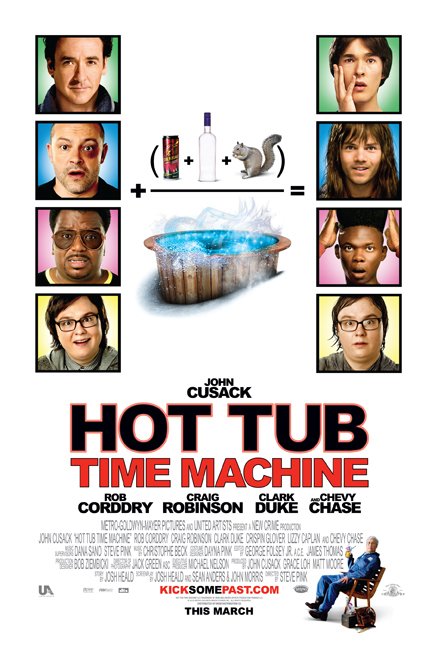
Intended as a comedy, the bawdy R-Rated film raises some interesting problems in time travel. A number of people don't like it, but there were requests for Hot Tub Time Machine, and so it has been added to the list.
-
Not As Expected, or Warming Up: a brief background sets the stage for the analysis of the film.
-
The Big Issue, or Theory? What Theory?: fixed time is considered and discarded in connection with the analysis of this film, and replacement theory introduced.
-
Memory Problems, or What Do You Know?: looks at the unanswered questions concerning who remembers what when.
-
The Fundamental Problem, or Dying to Go: recognizes that the entire reason for the trip is erased by the trip, creating a major anomaly.
-
Adam and Jenny, or Fork You: examines why Adam gets stabbed both when he breaks up with Jenny and when she breaks up with him, and more fundamentally why he was unable to save that relationship.
-
Adam and April, or Planned Spontaneity: looks at the meeting that happened only in the second history, and considers what would happen in the other histories.
-
Chocolate Lipstick, or Sing It, Nick: considers the change Nick makes to his music career.
-
Calling Courtney, or Mrs. Webber-Agnew: hits the problem created by Nick's phone call to his then nine-year-old future wife.
-
Lou and Kelly, or Don't, Stop: hits the problem with Jacob's misconception.
-
Motley Lou, or Sing It, Dorchen: deflates the notion that Lou could steal the career of a successful band by taking their music.
-
Lougle, or Search Me: the flaw in trying to steal the success of Google.
-
A Squirrely Butterfly, or Pass On This: studies the interaction between the squirrel and the bet and chaos theory.
-
Operation Chernobly, or Inconceivable: recognizes the complication that if Jacob is conceived because Lou encounters Kelly while searching for the Chernobly, Jacob would not have existed in the original history.
-
Disarming Phil, or Left Right: hits a snag in unraveling the problem with the loss and restoration of Phil's arm.
-
Staying, or Loopy Memories: asks what happens when Lou stays in the past, and realizes that there is a problem inherent in the entire story that prevents a happy ending under replacement theory.
-
An Alternative, or Side-By-Side: finds a potential resolution to the story in parallel dimension theory, while admitting that it makes quite a mess in several universes but does provide the story we observe in one of them.
In the end, the story works, but not as a time travel story.
Premonition

Stephen Farrar not only encouraged me to do this analysis, he forwarded his own helpful notes on the subject. With this incentive and a copy provided by Jim Denaxas, I tackled the complicated time travel tale that is Premonition. It was daunting enough that I wrote a sixteen-part series, realized that due to one mistake in detail it was completely wrong, then scrapped it and wrote a replacement series, as follows:
-
An Outline: which gives the essence of the story as presented on the screen.
-
The Problems: which identifies the major temporal issues that must be resolved.
-
The Glass Door: which looks at the accident which happens in some timelines but not others.
-
Crashing Cars: which presents the fundamental problem of the film's core event, and starts to resolve it.
-
An Original History: which attempts to reconstruct the week in which no one arrived from the future.
-
The First Change: which reconstructs a proposed lost original anomaly and shows how Linda causes the accident before she knows about it.
-
Memory: which addresses the peculiar memory issues in this particular story.
-
The Second Trip: which considers what appears as the first trip in the film, from Thursday to Monday, and the history it creates.
-
Leaving Saturday: which deals with the problem of two separate trips originating from the same departure point.
-
The Third Trip: which reconstructs the changes caused by the trip from Saturday to Tuesday, and the history it creates.
-
Niggling Details: which covers those less important but annoying points that arise in the film.
-
Displacement: which considers the trip from Friday to Sunday, and the problem of two distinct traveling spirits arriving at the same temporal destination.
-
History: which constructs the week that will be remembered once everything resolves.
-
Obliviated: which answers the oft-asked question of what happens to the time traveler who departed from a previous version of history and then returns to the future.
It was, as noted, a very challenging puzzle, but it was not insoluble despite some quirky assumptions.
That completes the index through 2010; next we will continue with articles published in 2011.



 The analysis of Terminator Salvation was originally presented as a seventeen-part series, but was consolidated to two articles, the first of which was a recap of the events of the first three films and the second an examination of the issues raised by the fourth--a film with no time travel which nevertheless raised serious temporal issues along the way.
The analysis of Terminator Salvation was originally presented as a seventeen-part series, but was consolidated to two articles, the first of which was a recap of the events of the first three films and the second an examination of the issues raised by the fourth--a film with no time travel which nevertheless raised serious temporal issues along the way.






